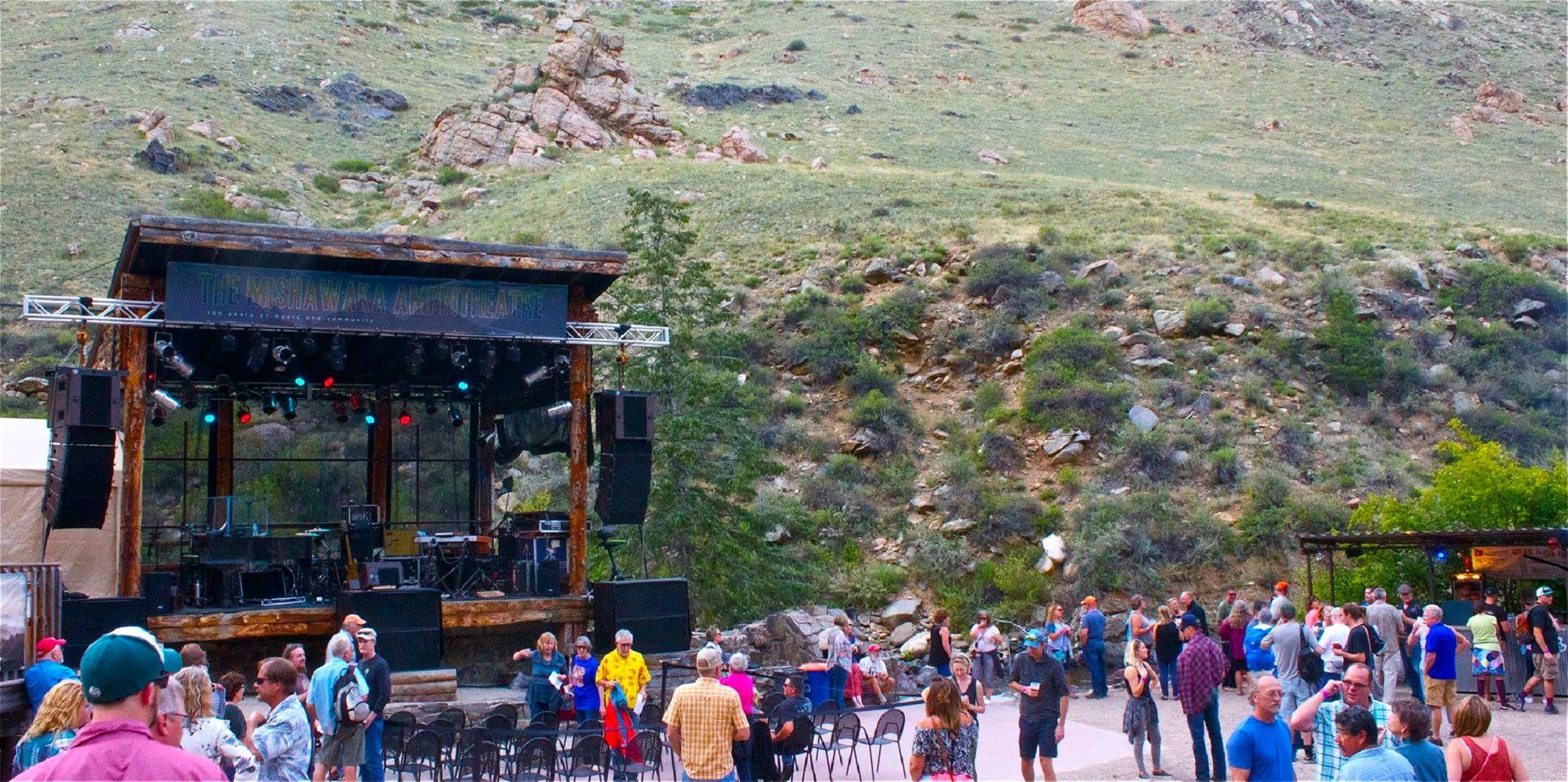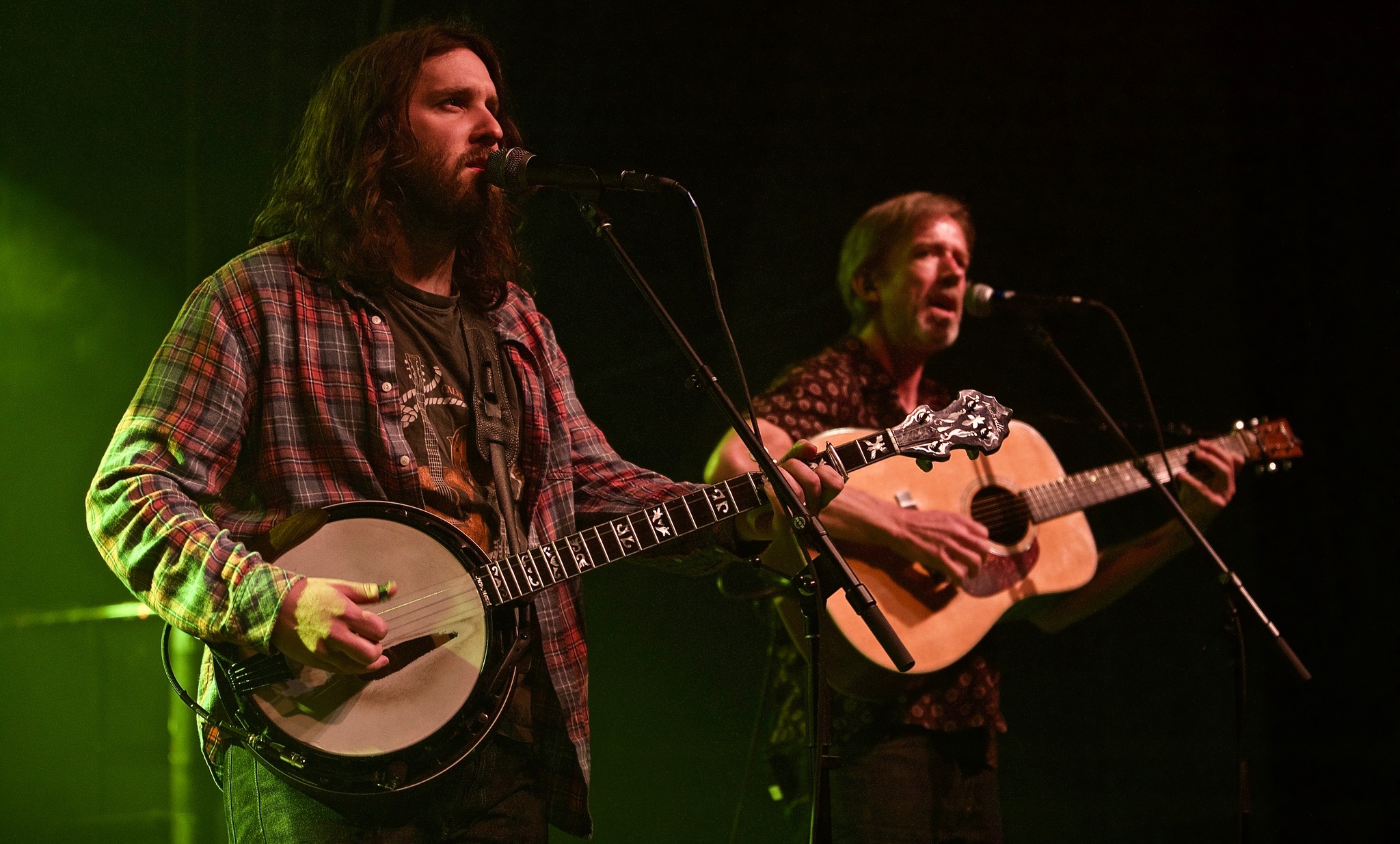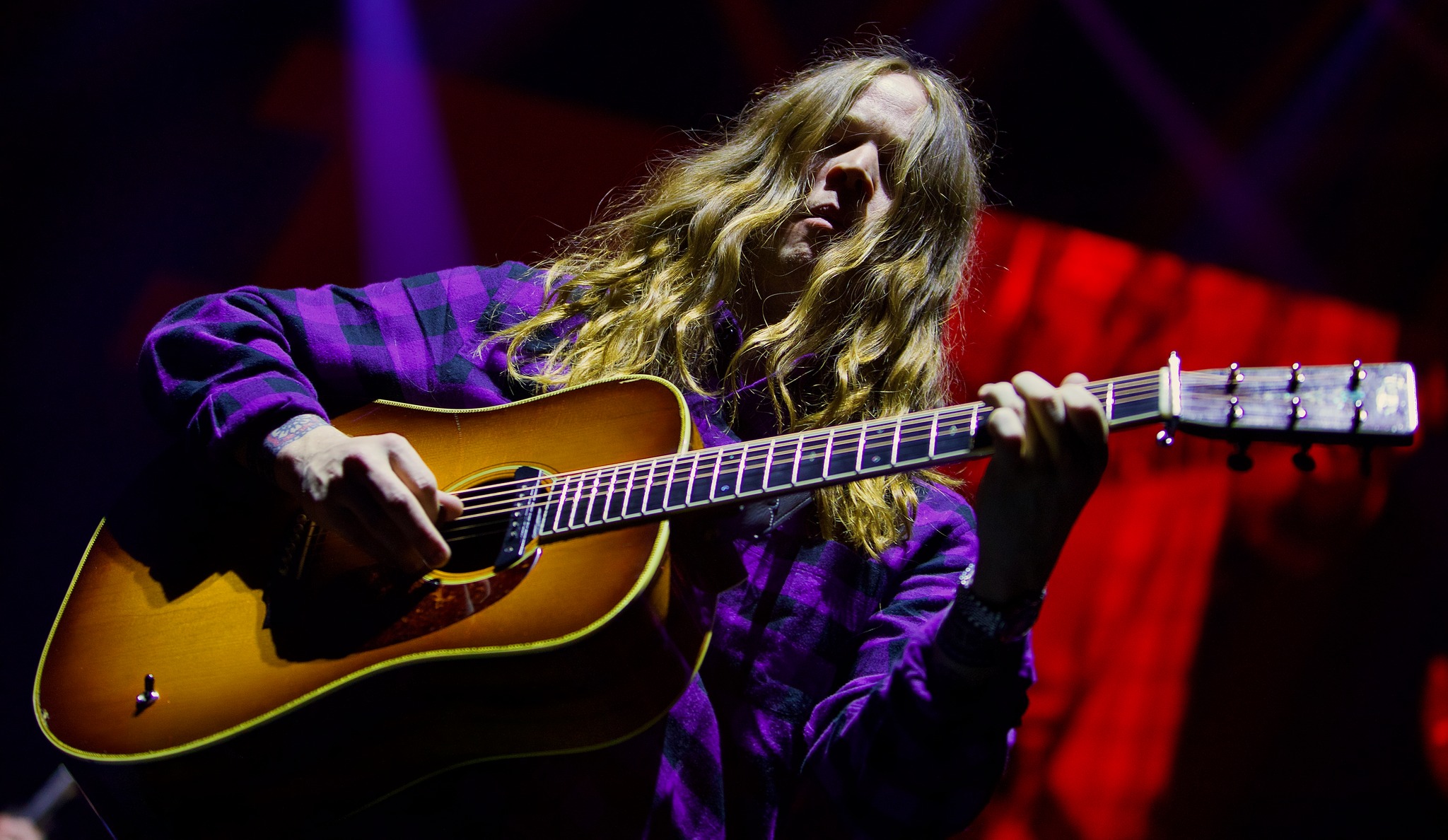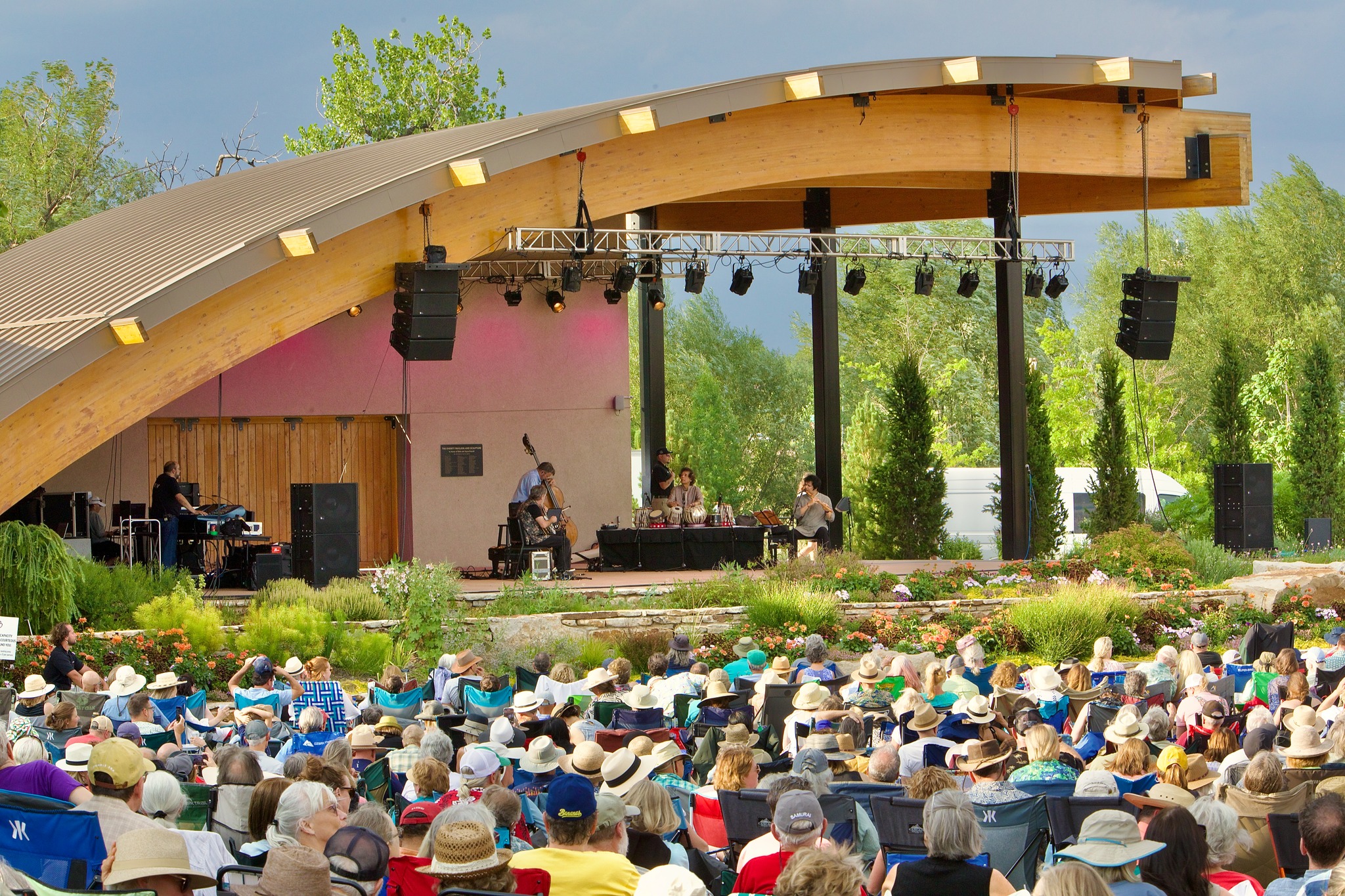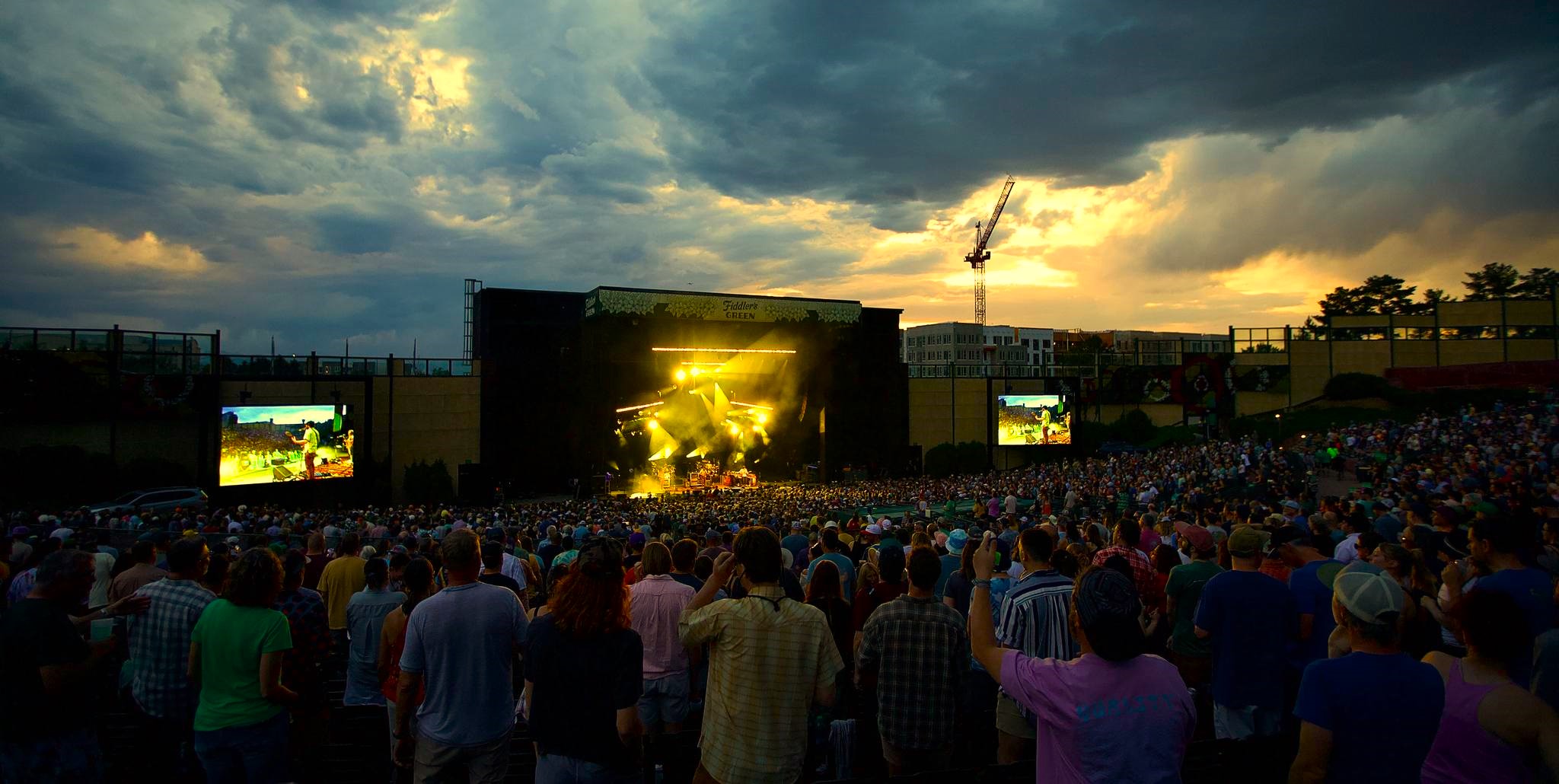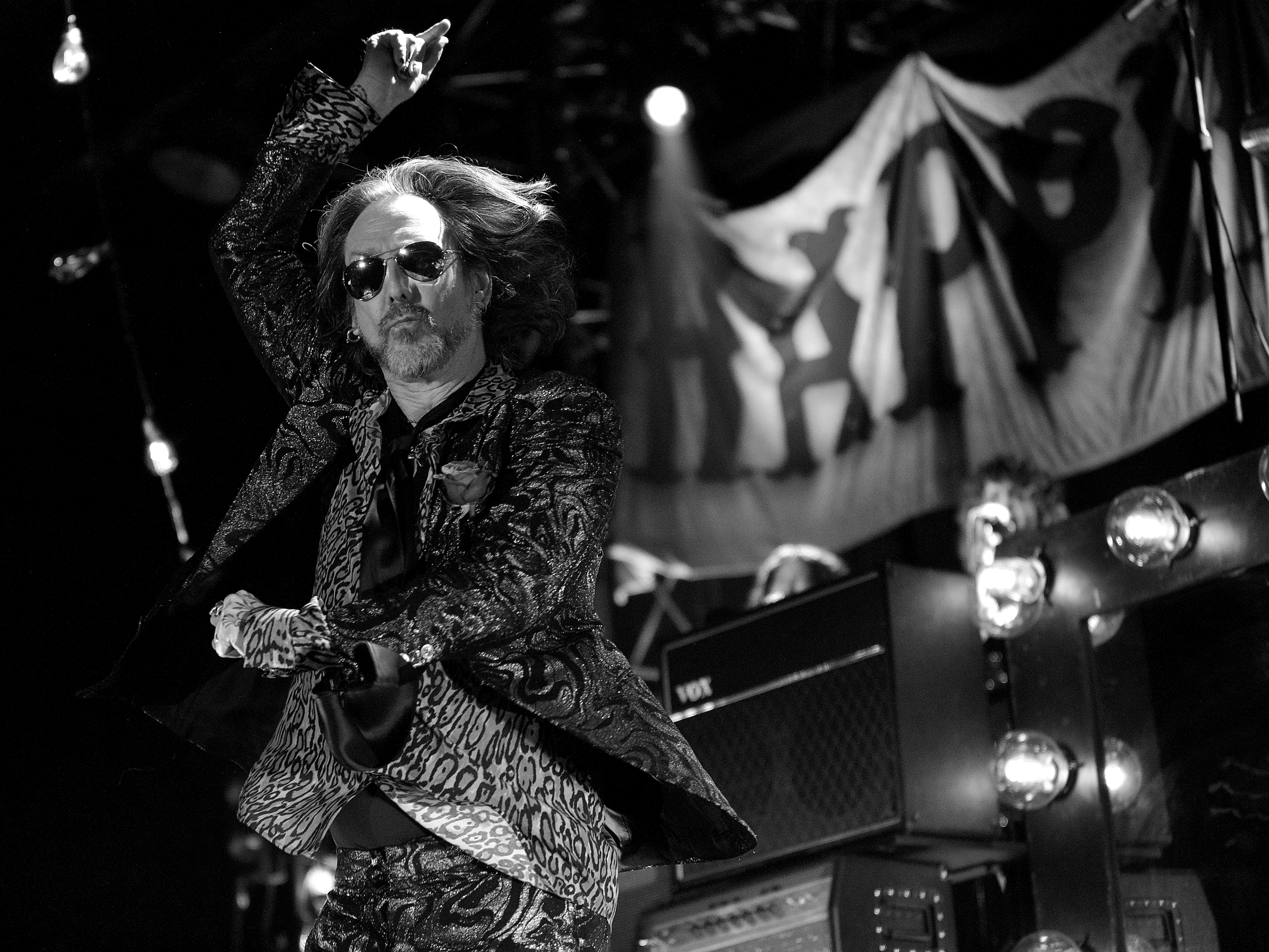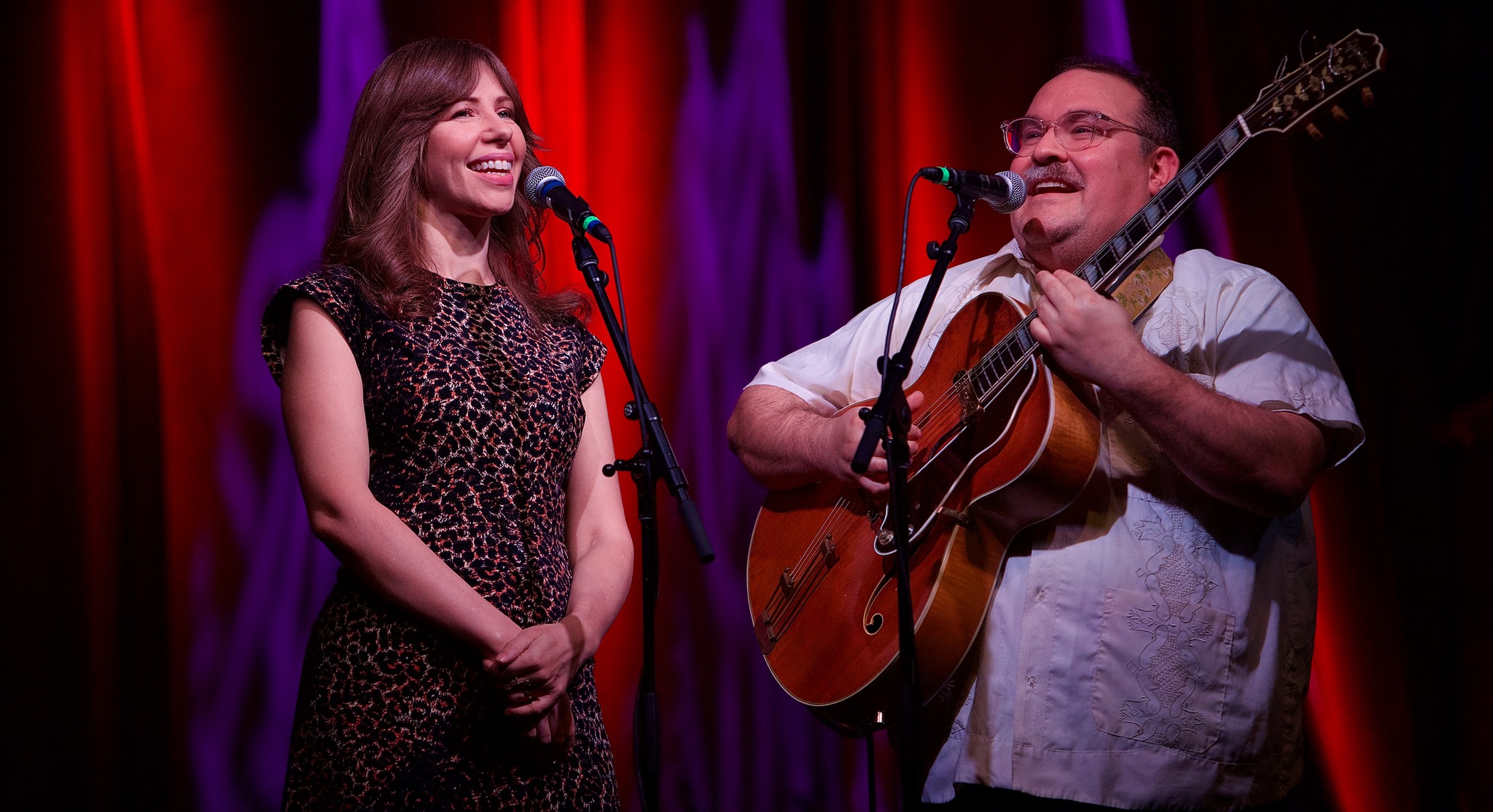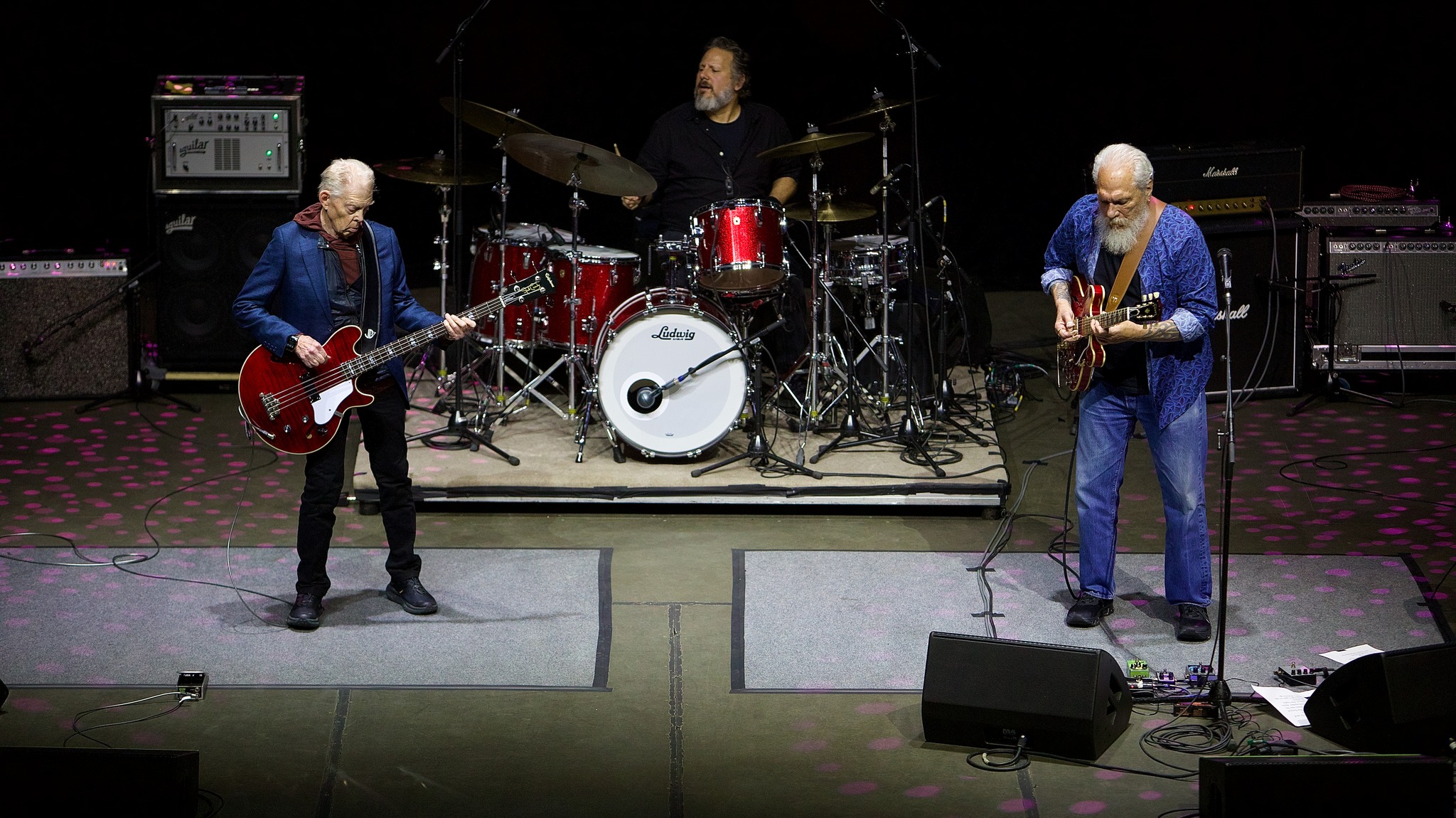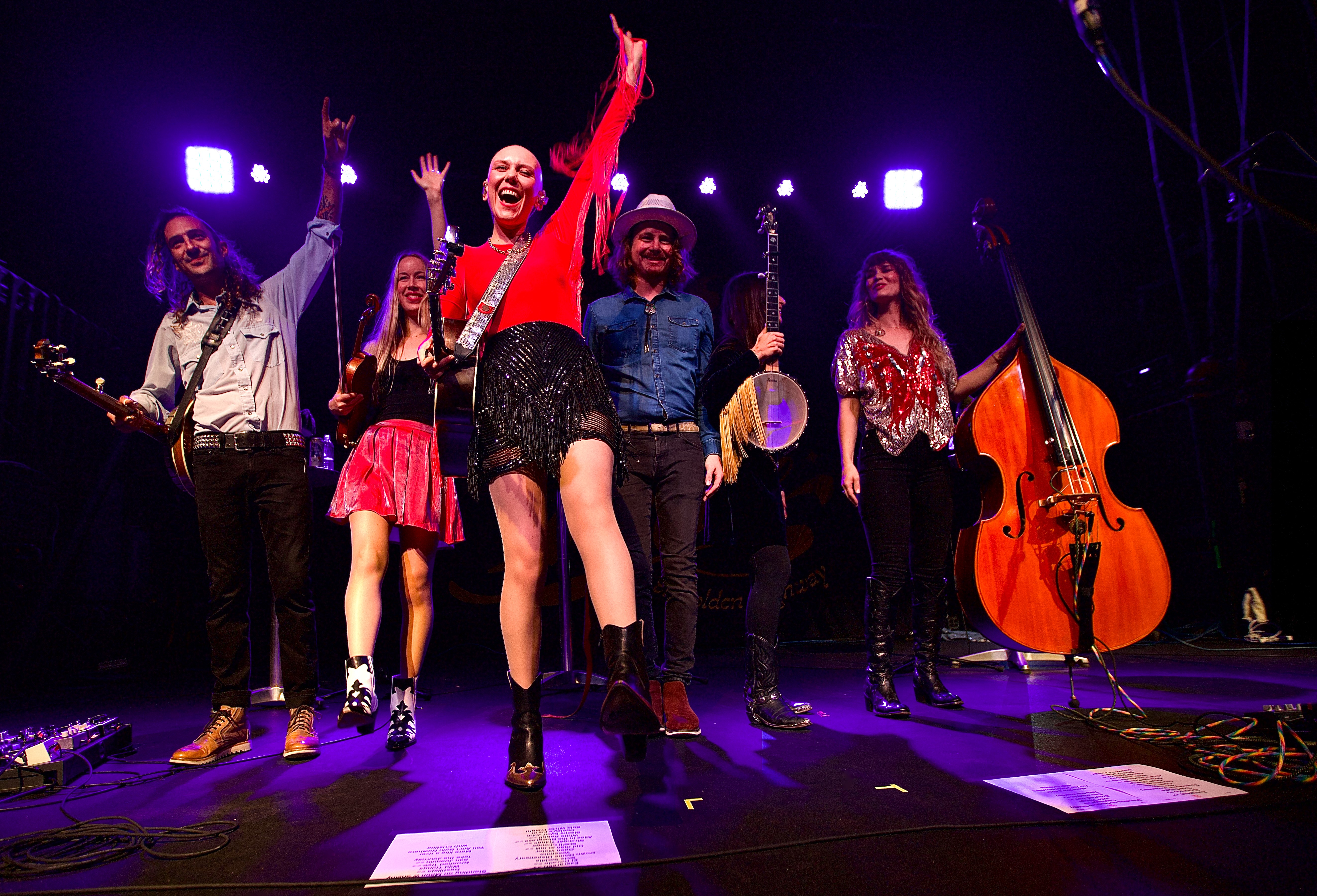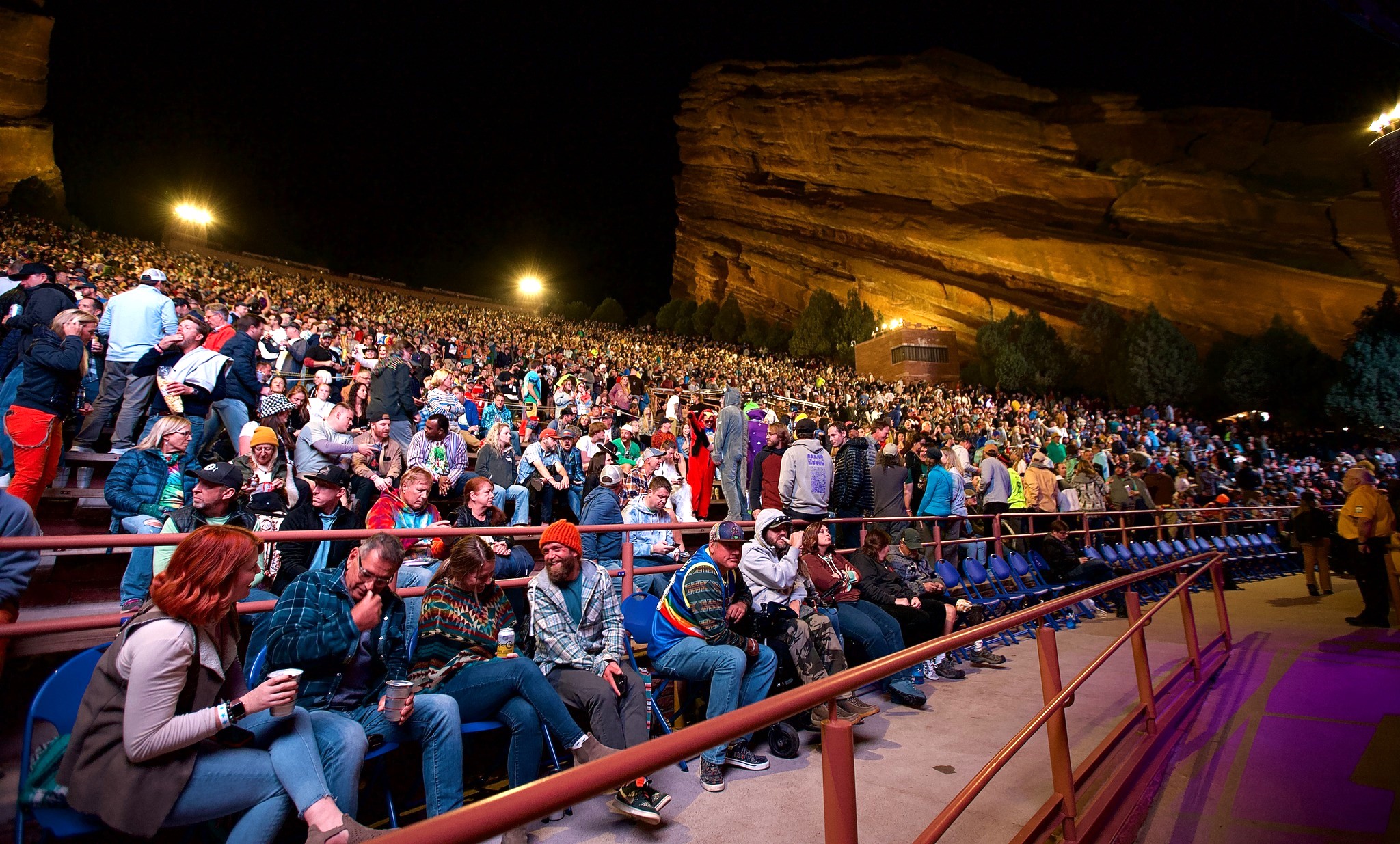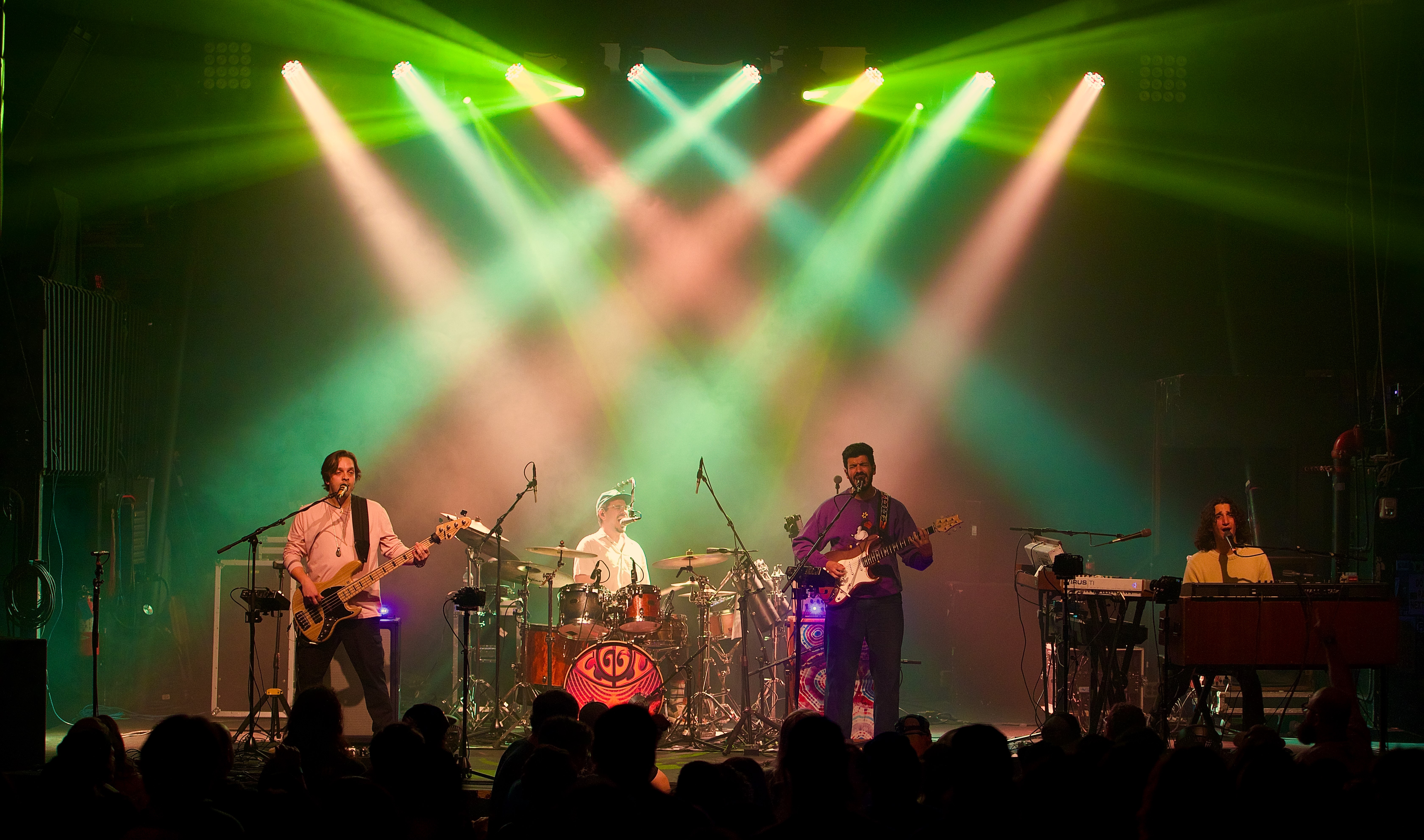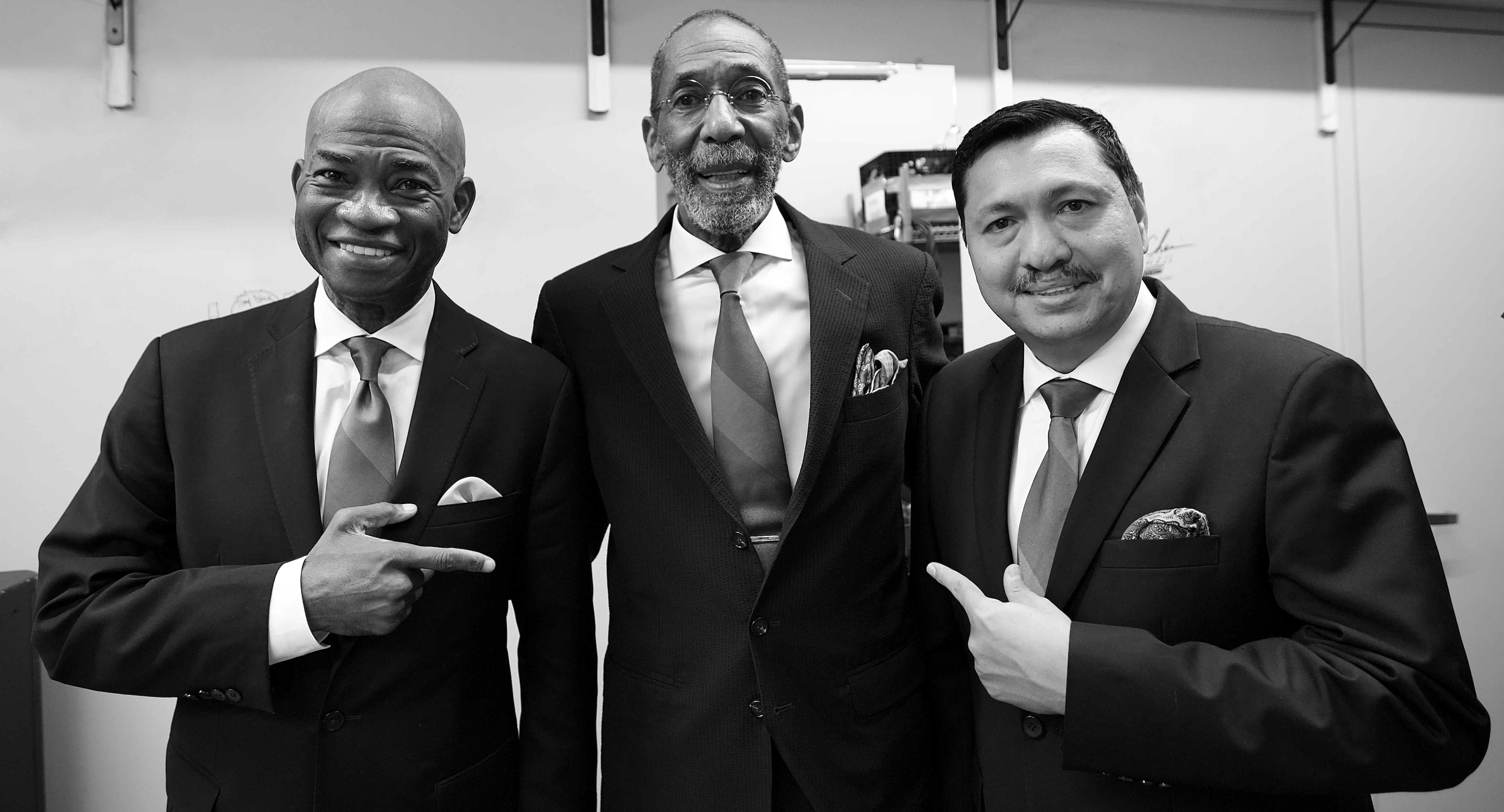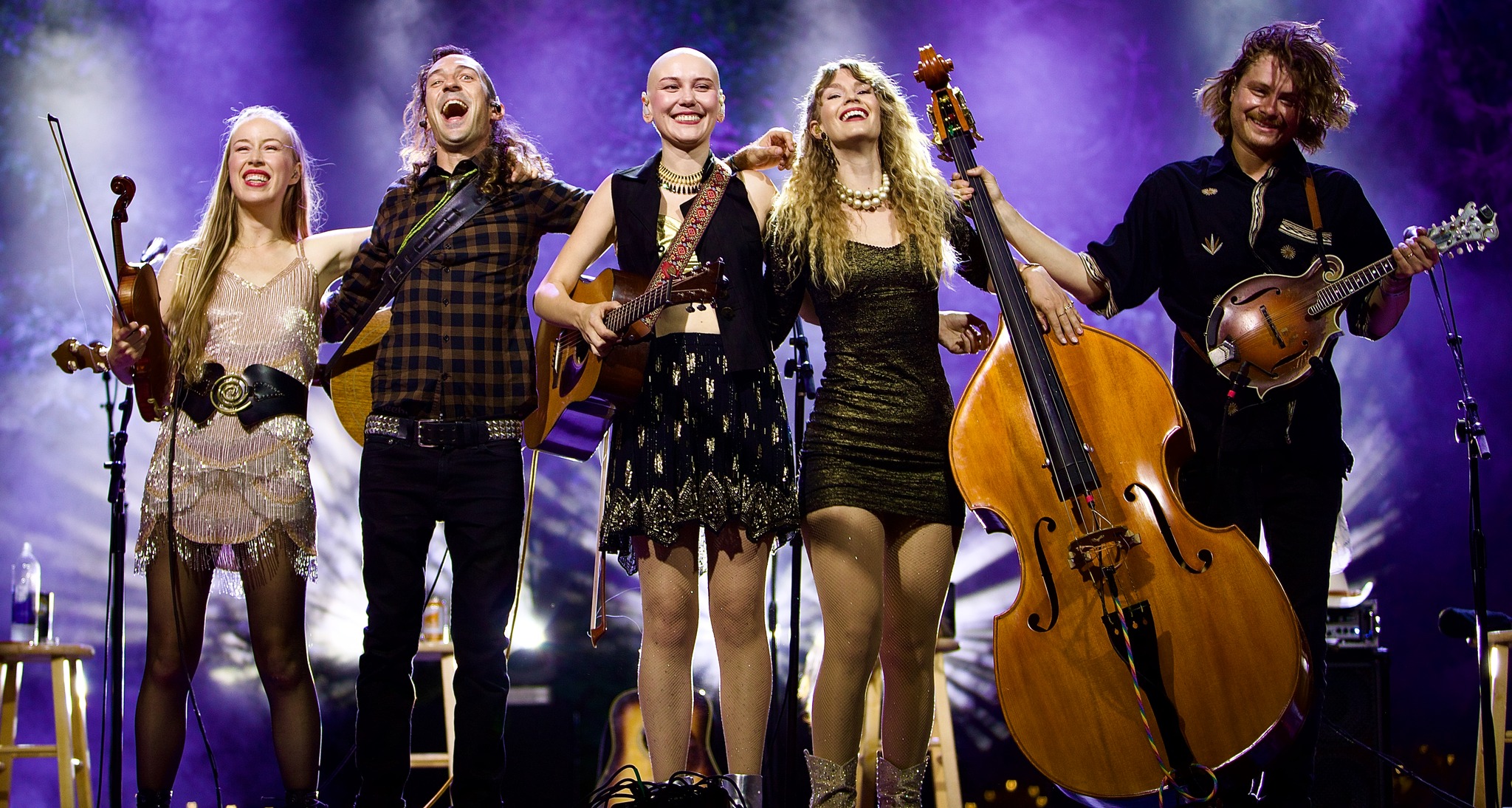Nestled in the north country of Colorado, lies yet another hidden gem of The Centennial State’s musical legacy: The Mishawaka Amphitheater. Set amongst towering canyon walls and located on the edge of The Poudre River, patrons are greeted from the road by a non-descript store front and privacy fencing, neither of which denotes the unexpected lying inside. Upon entering the restaurant, visitors are presented with their first inkling of the location’s long ties to music, as autographed, framed promotional pictures of performers past line the floor-to-ceiling wood interior in Fillmore fashion. Passing deeper into the heart of the century-old building, the room opens up into a dance hall, equipped with a small stage and high ceilings, able to accommodate about 150, and is utilized in the winter months for performances when the weather is far too cold to host events outdoors. The ballroom transitions to the outdoor deck, primarily used for dining and it is here that one gets their first look at the riverway lying at the foot of the property behind the obscured view from the road. Descending a few steps, the tour continues onto the main grounds, a 360-degree spin revealing the jewels of the establishment: two elevated VIP viewing areas, a central, gravel-paved standing room only dancing area, and The Mishawaka Amphitheater stage, constructed from indigenous timbers and stones, literally hanging over the turning waters, all of which can sustain only 950 souls on any given evening. Although its appearance differs significantly from the God-inspired monolithic majesty of Red Rocks or the Urban legendry of The Ogden or Bluebird, the talent that has crossed the threshold of its doorways rivals these in comparison, while offering the small-town family intimacy akin to many of the locales of the region, setting up those in attendance for many of those cherished “pinch-me” moments.
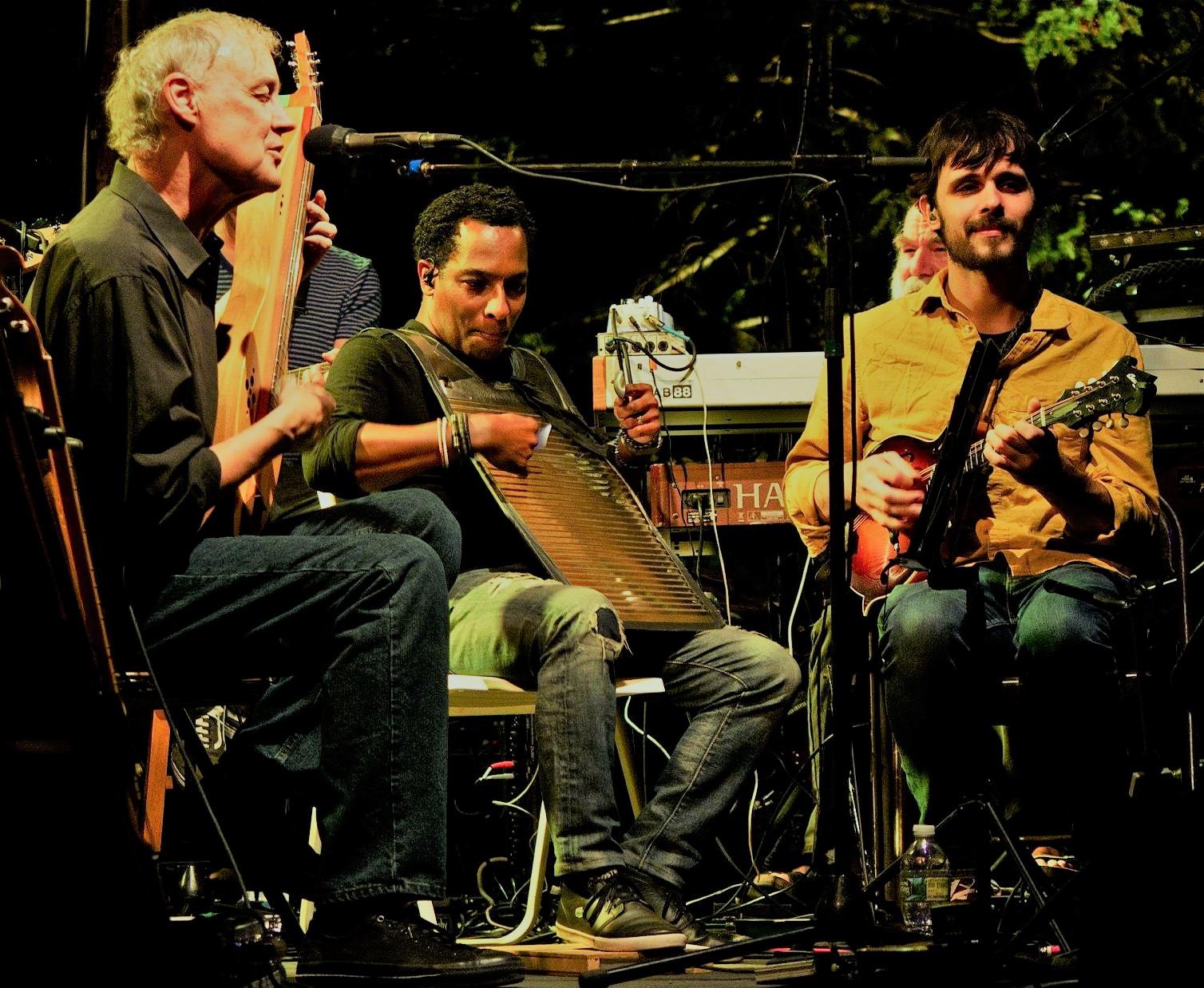
Last Saturday, The Mish, as it is called by many, changed its role from rural honkytonk to gospel church with the first return in five years of Bruce Hornsby and The Noisemakers. Comprised of the usual suspects, including bassman J.V. Collier and “Master of the Staff” keyboardist John “J.T.” Thomas, both of whom have filled their slots for nearly three decades, as well as some newer faces, namely master shredder Gibb Droll on guitar, mandolinist and fiddler extraordinaire John Mailander, and trap-master Chad Wright, the band took the stage to the applause of a nearly sold-out house.
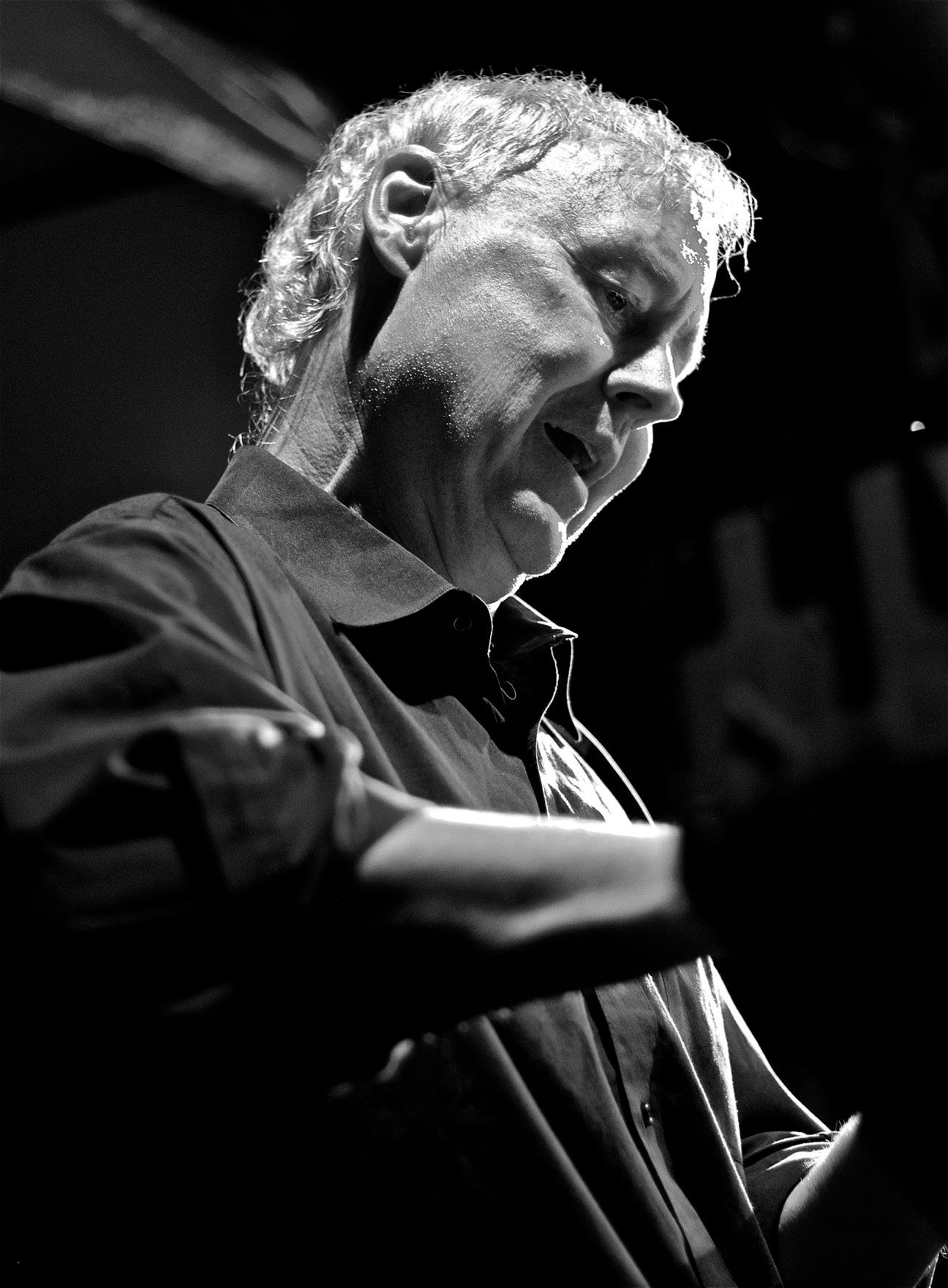
Getting things started, Hornsby opened the show with a pairing of his original “Across the Great Divide”, which built up a huge head of steam before transitioning into Junior Parker’s “Mystery Train”, propelling the crowd into a furious getdown, establishing that the revered band leader was ready to preach from his 88-keyed podium. Throughout the evening, Hornsby & Company covered the majority of his 1998 release Spirit Trail, including takes on “King of the Hill”, “Preacher in the Ring”, “Resting Place”, “Funhouse” and “Sunflower Cat”. With an extensive catalog, tracks of significance were pulled from other albums to fill out the set and involved such early standards as “The Way It Is”, “On the Western Skylight”, and “Jacob’s Ladder”. Surprisingly, for a state with such a large population of Deadheads, the Rocky Mountain venue was barren without any nods to Hornsby’s former bandmates. As the band is always open to and honors any requests, whether audible or written, this was more than likely a fumble on the part of attendees, as early on Hornsby noted that there had only been four requests. Towards the end of the evening’s single set, the band moved to folding chairs at center stage for what Hornsby referred to as “the front porch portion of the show”. Here, Hornsby utilized dulcimers and the trusty accordion, Wright replaced his drum kit for a washboard and spoons, while Mailander continued his use of the mandolin for accompaniment. Droll, Collier, and Thomas continued their contribution on their standard vehicles, albeit a bit softer, as the band journeyed through acoustic versions of “Every Little Kiss”, “Fortunate Son”, “Shadow Hand”, “Swan Song” and Van Morrison’s “Moondance”. This dynamic shift proved again the talent of the players, as acoustic play, or error, is far more transparent to the listener, finding no shelter in the coverage of effect.
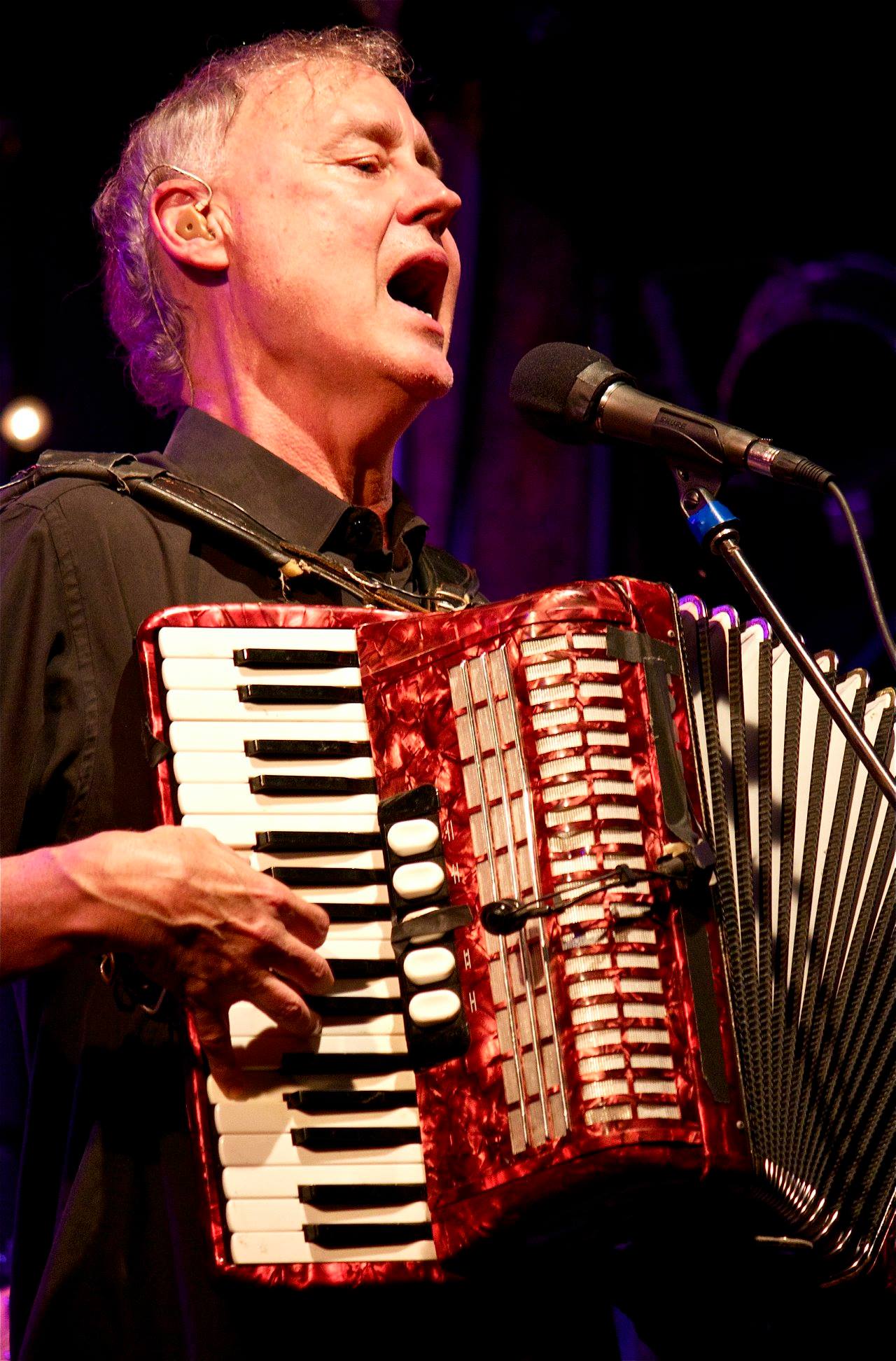
The takeaway from this evening was that after 30 years of performance, Hornsby still is having the time of his life. His grin is as wide as his talent, and neither seem to be waning. He continues to have a durable relationship with the members of the band that is emphasized by the unrelenting, well-timed musical exchanges that only come from hours of cohesive practice. The looks of joy and surprise shared on stage come off as genuine, not as a rehearsed schtick or parlor trick, a fact emphasized by the long-standing tradition of playing without a set list. This aspect most likely holds the deepest foundation from which these musicians find their joy on a nightly basis of surprises. Witnessing this group’s proficiency is anything but standard, as both the structure and improvisation leave the audience, and possibly the band, wanting more. As this group swings together through the spectrums of soul, jazz, funk, and gospel on their final three-week stint of the summer tour, it should be stated that, whether veteran or newbie, buying into this experience is no snake-oil charade, but authentic musical bliss, played from the heart, and shared on both sides of the stage.






